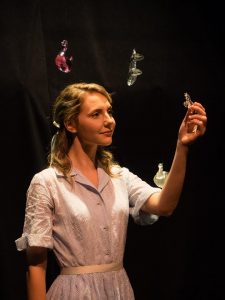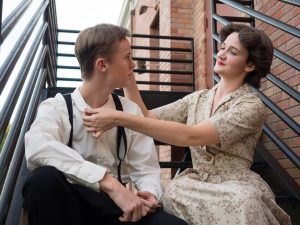In contrast to the article on authorial intent and protecting the playwright’s vision that I previously posted, this article in the Guardian talks about 3 different productions of Chekhov plays being performed in London – each with a unique vision of what it means to attempt to communicate what the playwright had in mind: One traditional looking ‘samovar’ production, one minimalist, and one updated ‘contemporary’ production.
As a playwright, I am generally on the side of authorial intent. Good playwrights think through all the elements of production, and if it’s a good play, all of those elements – text, design, staging, lighting etc. – should be aiding in making the play what it is. I’m a believer in a traditional looking Beckett play, because the design of the space is part of what he was intending. And if a production wants to tell an audience something other than what was intended, find another play.
However…
As a director, I recognize that I am as guilty as anyone of taking liberties with the look and feel of the production of a play. Steampunk Romeo and Juliet wherer the actors change roles every scene. A blown-up Viewpoints improv production of Antigone. A production of Murder in the Cathedral that looked like a Robert Wilson show. But, for me, presenting those plays in that way had more to do with unlocking different elements of the play than regularly get released than it did with just ‘looking cool’ or ‘being interesting.’ These different elements were not OTHER than what was in the play, they were (and are) within – in the text, the language, in the implications of the situation, sometimes lost in the recontexting of a play (producing an ancient Greek play in 21st century America). But my most sincere hope and prayer is that these productions are all still true to what was in the text of the play, and hopefully carry across to the audience what was intended by the author – even if it looks different.
So, do I want people to do that with my plays? Well, no. I’ve had the experience of someone making an alteration to a play of mine that I felt strongly changed what I had in mind, several times. I’ve seen it drastically injure the intention of the play, putting “words in my mouth” that I never said and didn’t mean – an addition that was not what I had written. But, if there’s a way of taking something that I’ve written and discovering something in it that I hadn’t noticed before and drawing it out of the text that is already there – I hope that I could find the joy in that.



